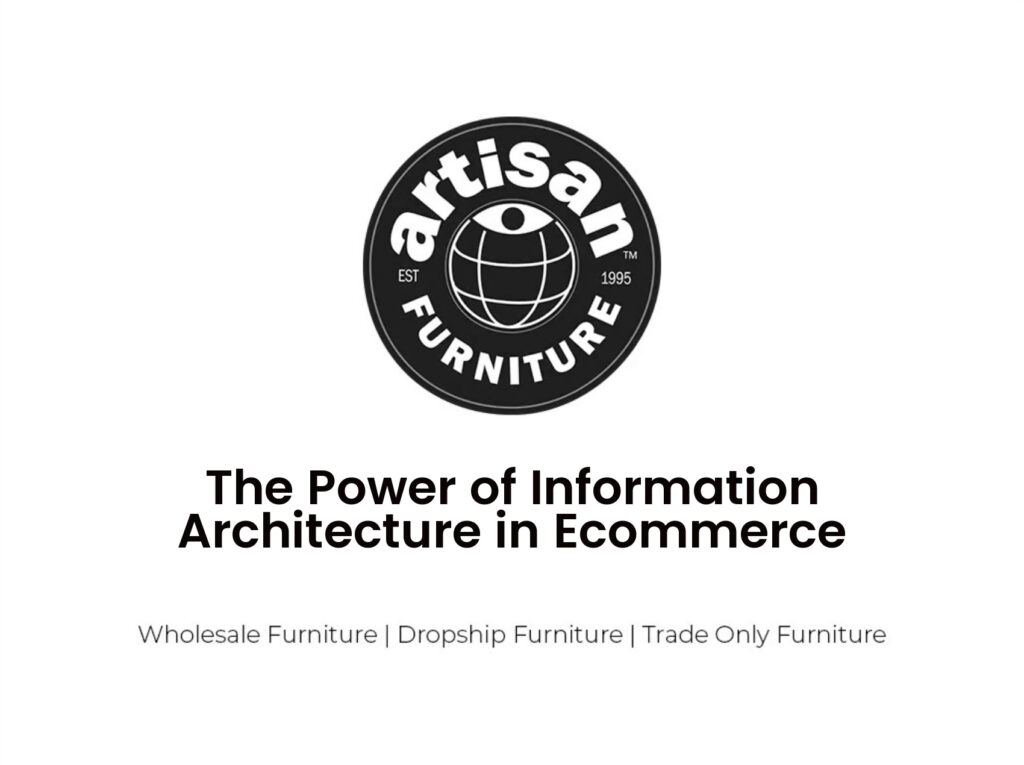The Power of Information Architecture in Ecommerce
The power of information architecture (IA) in ecommerce is explored in this article. IA involves organizing and structuring information to improve findability and understanding. Good IA is crucial for the success of an ecommerce business, as it allows customers to easily find products and enhances user experience. Monitoring metrics like bounce rate and conversion rate can indicate the effectiveness of IA. Designing IA should prioritize user experience and be based on user research. Consistency and predictable patterns also improve usability.
Table of Contents
ToggleThe Importance of IA in Ecommerce
Good information architecture is crucial for the success of an online store, as it allows customers to easily and intuitively find products, leading to a higher conversion rate and profitability. When an online store has well-organized information architecture, customers can navigate through the website effortlessly, quickly locating the products they are interested in. This seamless experience enhances customer satisfaction and increases the likelihood of a successful purchase. With a higher conversion rate, the online store can generate more sales and ultimately achieve greater profitability. Therefore, investing time and effort into creating a clear and intuitive information architecture is essential for any online store looking to thrive in the competitive ecommerce market.
Enhancing User Experience With IA
Enhancing user experience with effective organization and navigation can greatly improve the success of an online store. Here are three ways information architecture (IA) can enhance user experience:
-
Streamlined Navigation: A well-structured IA ensures that users can easily navigate through the online store, finding the products or information they are looking for without any confusion. Clear and intuitive navigation menus, search functionality, and filters can help users quickly locate what they need.
-
Improved Findability: IA helps users find products or information quickly and effortlessly. By organizing content into logical categories, using descriptive labels, and providing clear pathways, users can easily locate the desired items. Effective IA reduces the need for excessive scrolling or searching, making the shopping experience more efficient and enjoyable.
-
Enhanced Usability: Good IA optimizes the layout and presentation of information, making it easier for users to understand and interact with the online store. Consistent design patterns, logical hierarchies, and intuitive labeling all contribute to a seamless user experience. By minimizing confusion and frustration, IA boosts user satisfaction and increases the likelihood of conversions.
Driving Conversion Rates With Effective IA
Effective IA plays a crucial role in driving higher conversion rates for online stores. By organizing and structuring information in a way that is intuitive and easy to navigate, online retailers can enhance the user experience and increase the chances of a successful purchase. To illustrate the impact of IA on conversion rates, consider the following table:
| Without Effective IA | With Effective IA |
|---|---|
| Confusing navigation | Clear, logical structure |
| Difficult to find products | Intuitive product search |
| High bounce rate | Lower bounce rate |
| Low conversion rate | Higher conversion rate |
As shown in the table, effective IA can transform a confusing and frustrating shopping experience into a seamless and enjoyable one. By implementing best practices in IA, online stores can guide customers towards the products they are looking for, ultimately leading to increased conversion rates.
Strategies for Designing Successful IA in Online Stores
To design successful IA in online stores, retailers should prioritize user experience and conduct user research to inform their decision-making.
-
Understand the target audience: Retailers should conduct user research to gain insights into the preferences and behavior of their target audience. This will help them understand how users navigate and interact with the website, allowing them to design IA that meets their needs and expectations.
-
Focus on simplicity and clarity: A cluttered and confusing interface can discourage users from exploring the website further. Retailers should aim for a clean and intuitive design that makes it easy for users to find what they’re looking for.
-
Test and iterate: IA is not a one-time design task. Retailers should constantly test and iterate their IA based on user feedback and data analytics. This iterative approach allows them to continuously improve the user experience and optimize the IA for better conversion rates.
Key Metrics to Monitor for IA Effectiveness
Monitoring key metrics is essential to gauge the effectiveness of IA in online stores. By analyzing these metrics, store owners can identify areas of improvement and make data-driven decisions to enhance their information architecture. Here are some key metrics to monitor and their significance:
| Metric | Significance |
|---|---|
| Bounce Rate | Indicates the percentage of visitors who leave the site |
| Conversion Rate | Measures the percentage of visitors who make a purchase |
| Average Session Duration | Shows the average time visitors spend on the site |
Expanding Your Knowledge on IA in Ecommerce
Expanding one’s knowledge on IA in online retail can enhance the user experience and boost the profitability of an eCommerce store. Here are three key reasons why understanding IA is important for online retailers:
-
Improved user experience: A well-designed IA helps customers navigate through an online store effortlessly. It allows them to find products quickly and easily, resulting in a positive user experience. This, in turn, increases the likelihood of repeat visits and purchases.
-
Increased conversion rates: When an online store has a clear and logical IA, customers can easily locate the products they are looking for. This streamlined process reduces friction and encourages customers to complete their purchase, leading to higher conversion rates.
-
Enhanced website performance: Monitoring IA metrics such as bounce rate and conversion rate can provide insights into the effectiveness of an online store’s IA. By continuously analyzing and optimizing IA, retailers can improve website performance and ultimately drive more sales.


